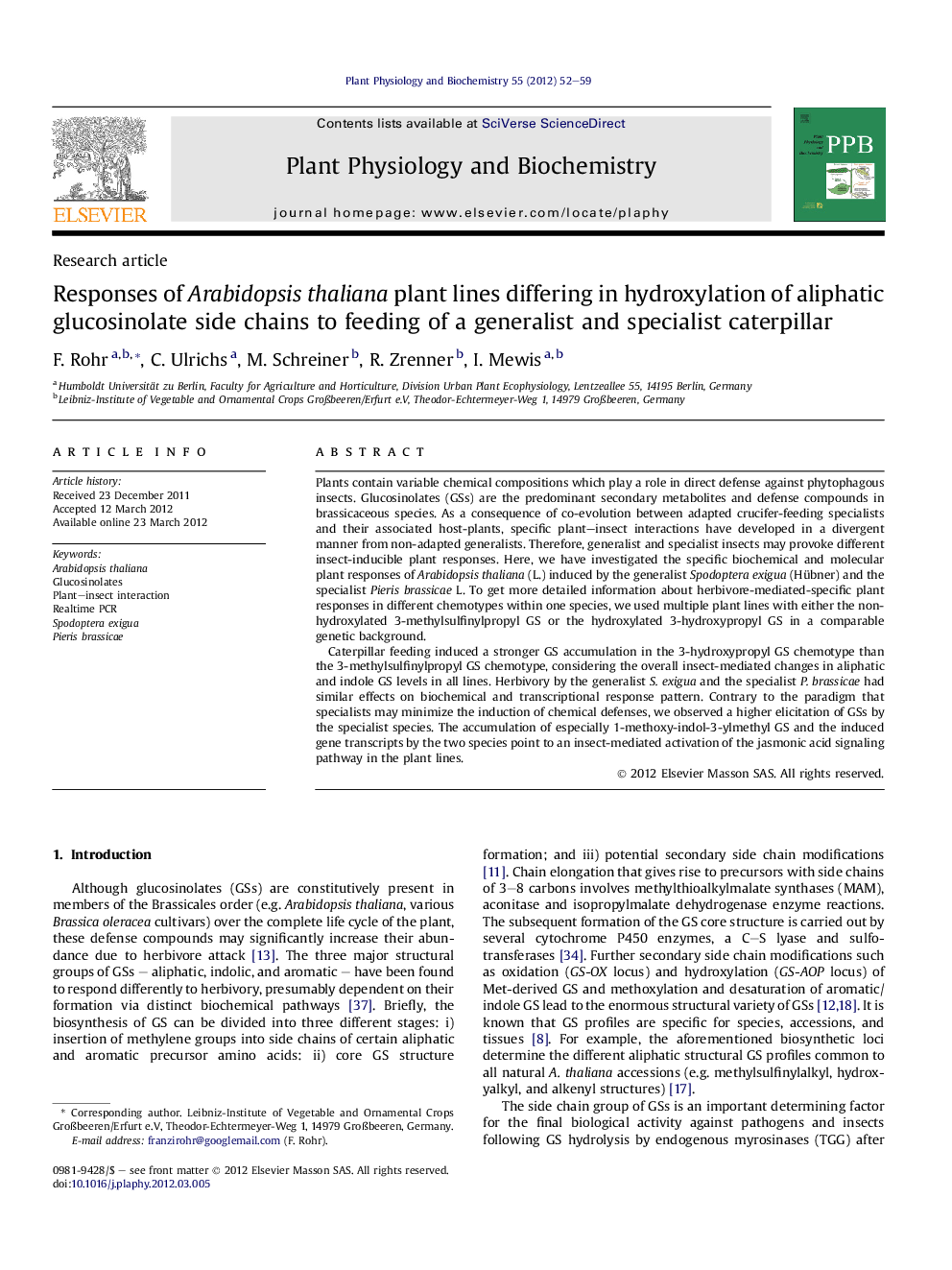| Article ID | Journal | Published Year | Pages | File Type |
|---|---|---|---|---|
| 2015060 | Plant Physiology and Biochemistry | 2012 | 8 Pages |
Plants contain variable chemical compositions which play a role in direct defense against phytophagous insects. Glucosinolates (GSs) are the predominant secondary metabolites and defense compounds in brassicaceous species. As a consequence of co-evolution between adapted crucifer-feeding specialists and their associated host-plants, specific plant–insect interactions have developed in a divergent manner from non-adapted generalists. Therefore, generalist and specialist insects may provoke different insect-inducible plant responses. Here, we have investigated the specific biochemical and molecular plant responses of Arabidopsis thaliana (L.) induced by the generalist Spodoptera exigua (Hübner) and the specialist Pieris brassicae L. To get more detailed information about herbivore-mediated-specific plant responses in different chemotypes within one species, we used multiple plant lines with either the non-hydroxylated 3-methylsulfinylpropyl GS or the hydroxylated 3-hydroxypropyl GS in a comparable genetic background.Caterpillar feeding induced a stronger GS accumulation in the 3-hydroxypropyl GS chemotype than the 3-methylsulfinylpropyl GS chemotype, considering the overall insect-mediated changes in aliphatic and indole GS levels in all lines. Herbivory by the generalist S. exigua and the specialist P. brassicae had similar effects on biochemical and transcriptional response pattern. Contrary to the paradigm that specialists may minimize the induction of chemical defenses, we observed a higher elicitation of GSs by the specialist species. The accumulation of especially 1-methoxy-indol-3-ylmethyl GS and the induced gene transcripts by the two species point to an insect-mediated activation of the jasmonic acid signaling pathway in the plant lines.
► Investigation of glucosinolate (GS) response in different chemotype lines of Arabidopsis. ► Generalist and specialist caterpillars induced similar response pattern in chemotype lines. ► Pieris brassicae elicited a stronger defense response than Spodoptera exigua. ► The 3-hydroxypropyl chemotype was more responsive than the methylsulfinyl chemotype.
